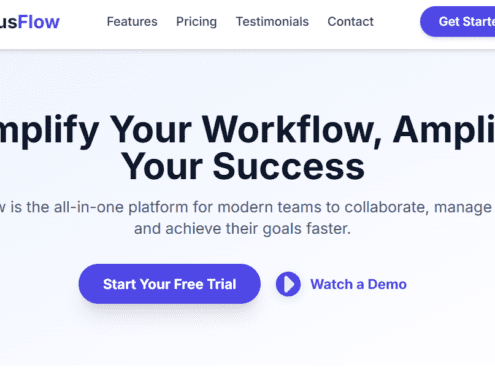App Store Optimization (ASO) in Kenya
-
Delivery Time2 Weeks
-
English levelProfessional
-
LocationUSA, United Kingdom, United Arab Emirates, New York, Nairobi, Kilimani, Kenya, Dubai, CBD Nairobi, Canada, Australia
Service Description
The cost of App Store Optimization (ASO) in Kenya is 80000KES per month.Get App Store Optimization (ASO) in Kenya at a price of 30000KES per month at Black Shepherd Technologies.
App Store Optimization (ASO) is a crucial strategy for any app developer or business seeking to thrive in the competitive Kenyan mobile market. With a significant and growing number of smartphone users, understanding and implementing effective ASO is the key to standing out, increasing visibility, and driving organic downloads. This guide will provide a detailed overview of ASO in Kenya, offering a comprehensive, 1000-word breakdown of essential strategies and best practices.
1. The ASO Landscape in Kenya
The mobile landscape in Kenya is unique, shaped by specific user behaviors, language preferences, and cultural nuances. A successful ASO strategy must be tailored to these local factors. A key consideration is the high penetration of mobile money services like M-Pesa, which influences how users interact with and transact on apps. Additionally, a mix of English and Swahili is prevalent in daily communication, making localization a powerful tool for connecting with the local audience. Unlike traditional SEO for websites, ASO is a continuous process of optimizing an app’s store listing to rank higher in app store search results and top charts. The primary goal is to increase the number of quality organic downloads, which are more cost-effective and have a higher retention rate than paid installs.
2. Keyword Research and Optimization
The foundation of any successful ASO strategy is meticulous keyword research. For the Kenyan market, this means identifying the terms and phrases that local users are actually searching for.
Brainstorming Local Keywords: Start by thinking like a Kenyan user. What words would they use to search for an app like yours? Beyond generic terms, consider specific local names for services or products. For example, a taxi app might consider keywords like “teksi Kenya,” “safari app,” or brand names of popular competitors. A mobile money app might use “M-Pesa,” “lipa na mpesa,” or “pesa app.”
Leveraging ASO Tools: Utilize ASO tools such as AppTweak, Sensor Tower, or MobileAction to analyze search volume, competition, and keyword suggestions specifically for the Kenyan App Store and Google Play Store. These tools can help you find high-volume, low-competition keywords that provide a strategic advantage.
Integrating Keywords: Once you have a list of target keywords, integrate them naturally into your app’s metadata. This includes the app title, subtitle (on iOS), and the short and long descriptions. The app title is a prime piece of real estate, and including a high-impact keyword can significantly boost your ranking.
Long-Tail Keywords: Don’t overlook long-tail keywords, which are more specific phrases like “cheap flights to Nairobi” or “online shopping Kenya.” These keywords often have less competition and are used by users with a clear search intent, leading to higher conversion rates.
3. Creating a Compelling App Listing
Beyond keywords, the content and visuals on your app store listing are crucial for convincing a user to download your app.
App Title and Subtitle: For the App Store, you have 30 characters for the title and a 30-character subtitle. Use this space strategically to include your brand name and primary keywords. On Google Play, you have 30 characters for the title, with keywords being more important in the long description.
App Descriptions: The description is your opportunity to sell your app. Start with a strong, concise opening that highlights the app’s unique value proposition. Use bullet points and clear headings to list key features and benefits. For the Kenyan market, consider addressing local pain points and explaining how your app provides a solution. For instance, a delivery app could highlight “fast deliveries in Nairobi and Mombasa.”
Localization (Swahili and English): For a significant part of the Kenyan population, Swahili is a preferred language. Localizing your app description into Swahili can dramatically increase your reach and downloads. This isn’t just about direct translation; it’s about cultural adaptation, using idioms and phrases that resonate with the local audience.
Visual Assets: High-quality visuals are essential. This includes the app icon, screenshots, and an app preview video.
App Icon: A unique, memorable, and visually appealing icon is the first thing a user sees. It should be easily recognizable and represent your brand.
Screenshots: Use the first few screenshots to showcase your app’s most important features and user interface. Use captions to explain the benefits of each feature. Consider using visuals that depict local contexts or a Kenyan lifestyle to make the app more relatable.
App Preview Video: A short, engaging video (up to 30 seconds) can demonstrate your app’s functionality and user experience more effectively than screenshots.
4. Ratings, Reviews, and User Engagement
User ratings and reviews are a significant ranking factor for both the App Store and Google Play. They are also powerful social proof that can influence a user’s decision to download.
Encourage Positive Reviews: Prompt satisfied users to rate your app. The best time to do this is after they have completed a positive action within the app.
Manage and Respond to Reviews: Actively monitor and respond to both positive and negative reviews. A prompt, helpful response to a negative review can sometimes turn a user’s experience around and shows that you value their feedback. This also signals to the app store algorithms that your app is actively managed and supported.
Update Frequency: Regularly updating your app to fix bugs, add new features, and respond to user feedback signals a well-maintained and reliable product. Frequent, quality updates can lead to a higher ranking.
5. Competitor Analysis
Understanding your competitors’ ASO strategy is vital for finding opportunities and staying ahead.
Identify Competitors: Identify your direct and indirect competitors in the Kenyan market.
Analyze their Keywords: Use ASO tools to see which keywords your competitors are ranking for, what their descriptions contain, and what their visual assets look like.
Find Gaps: Look for keywords they might be missing or under-utilizing. This is where you can find a competitive edge.
6. A/B Testing
ASO is not a one-time task; it’s a continuous process of testing and iteration.
Experiment with Metadata: Use A/B testing (Store Listing Experiments on Google Play) to test different app icons, titles, descriptions, and screenshots to see which versions lead to the highest conversion rates.
Analyze and Adapt: Use the data from your A/B tests to make informed decisions and continuously optimize your app’s store listing for maximum performance in the Kenyan market.








